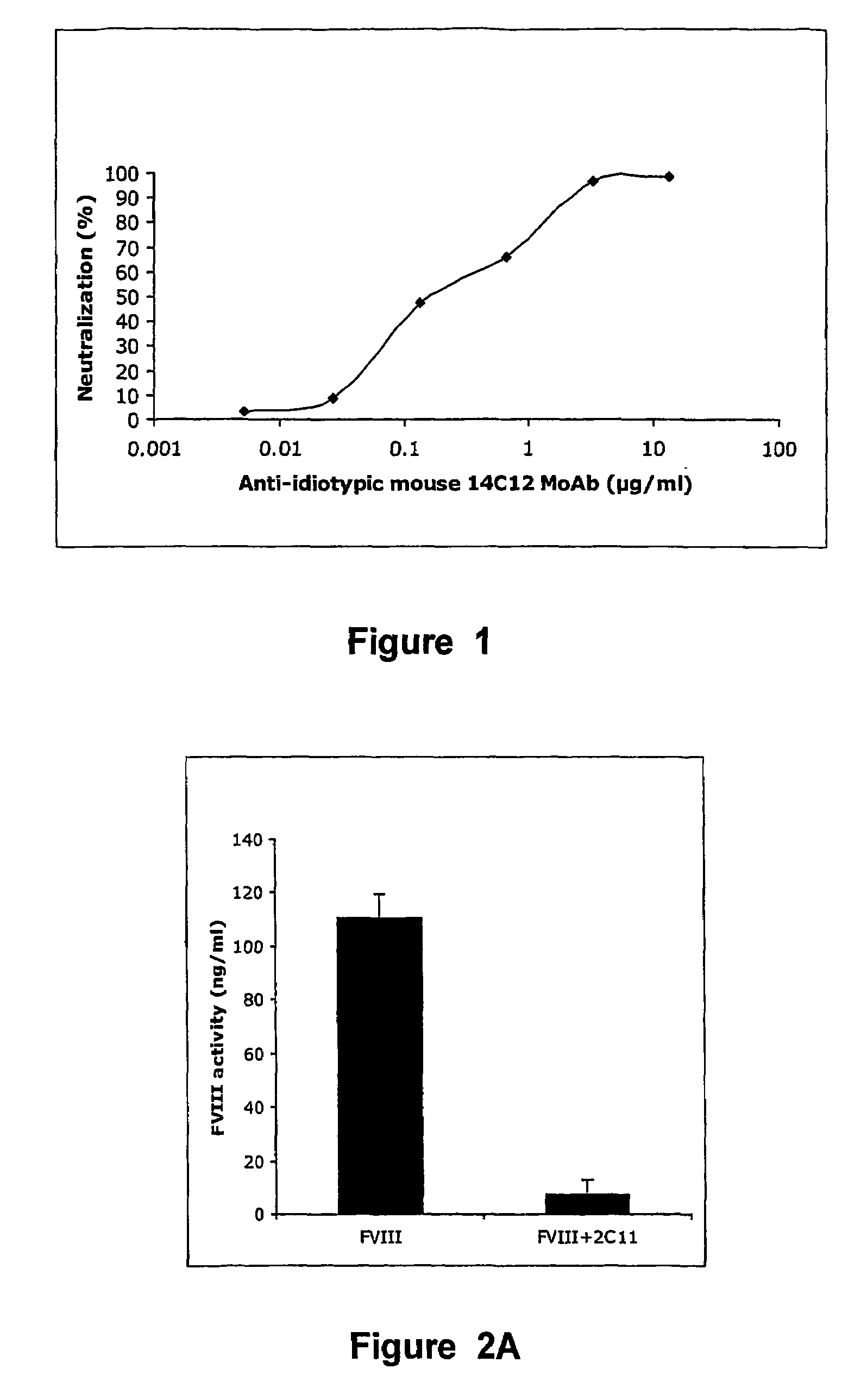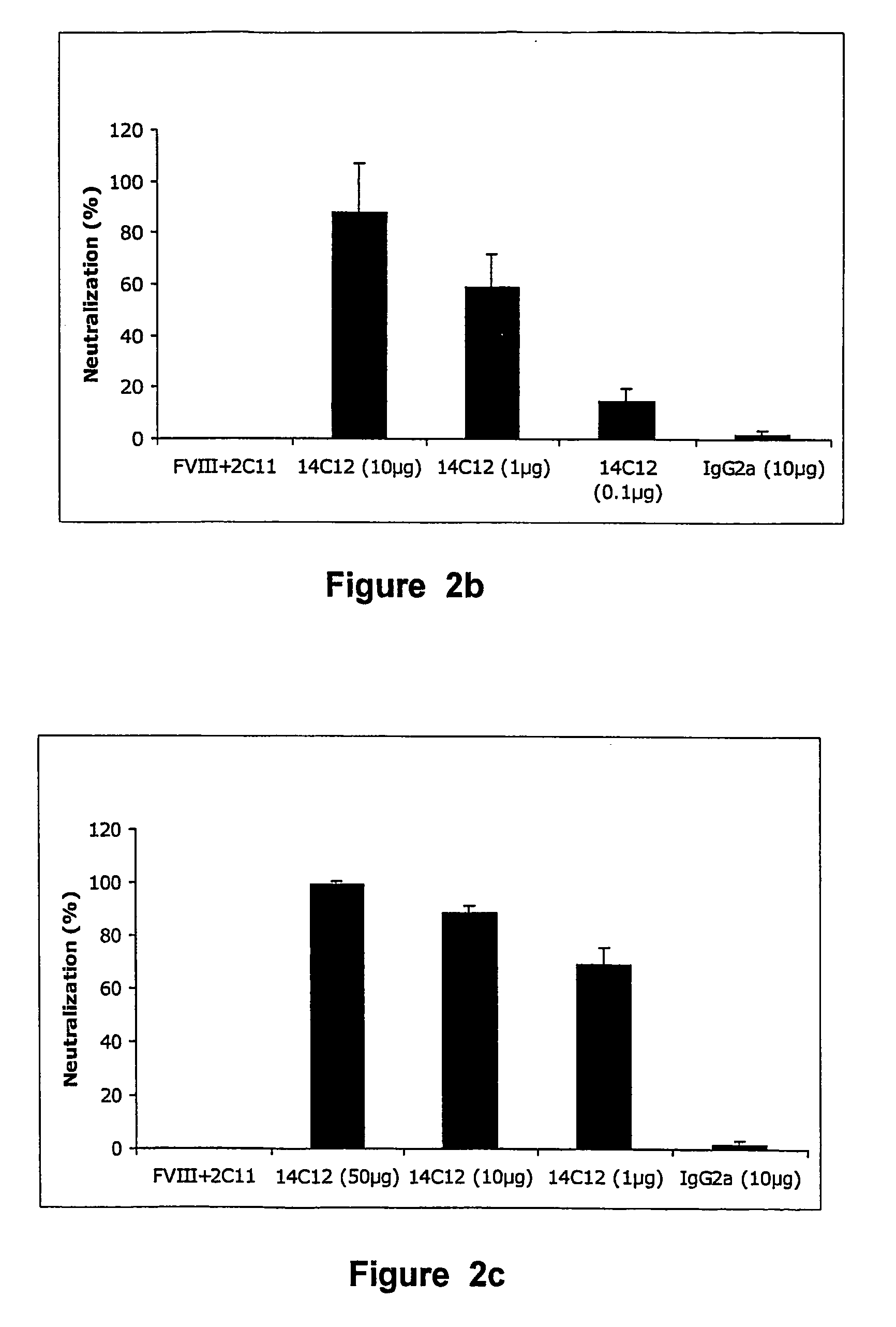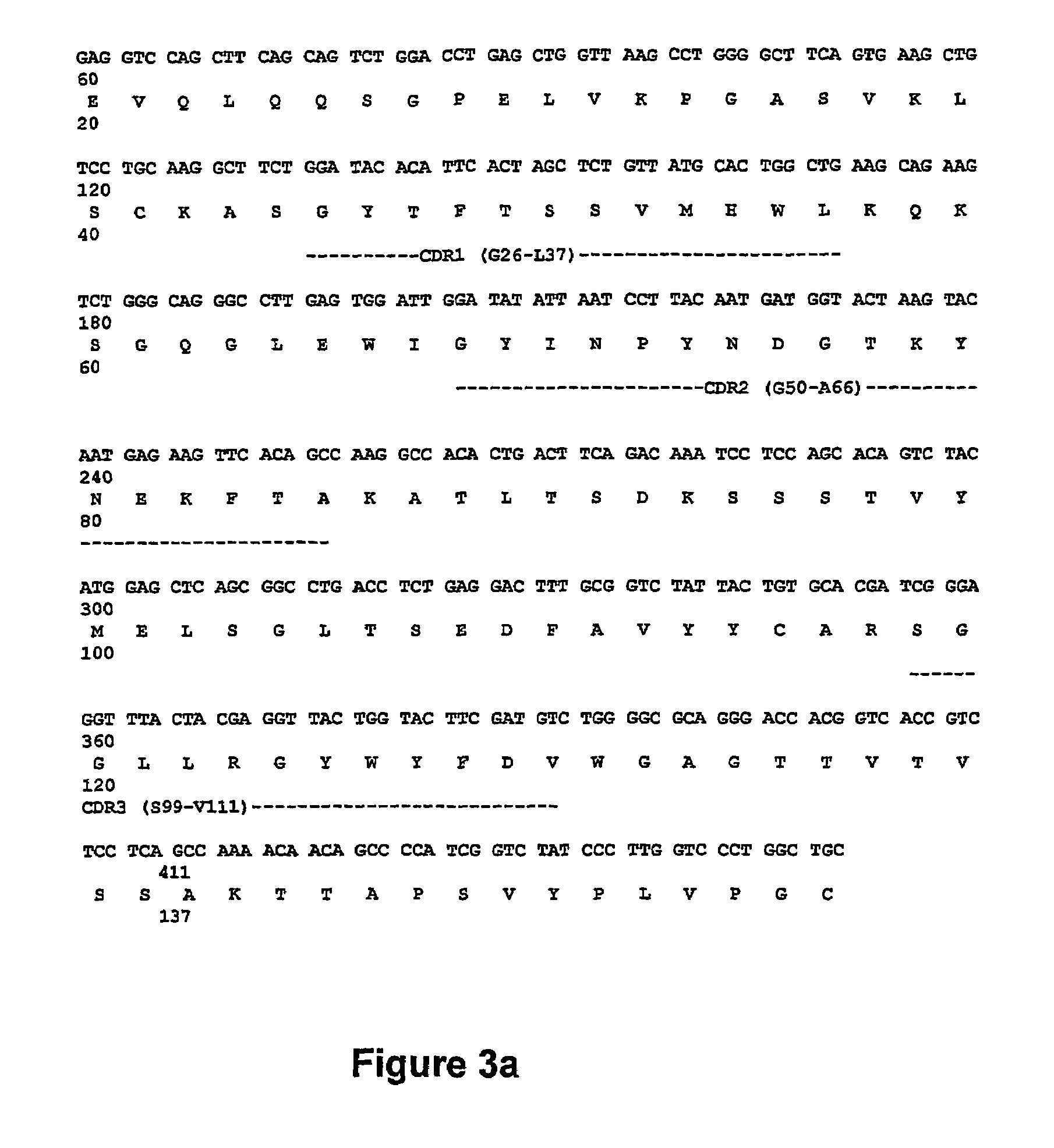Anti-idiotypic antibodies against factor VIII inhibitor and uses thereof
a technology of factor viii inhibitor and anti-idiotypic antibodies, which is applied in the field of anti-idiotypic antibodies against factor viii inhibitors, can solve the problems of uncontrollable bleeding in joints, muscles and soft tissues, and the medical community is, however, far from reaching these goals, and none of these methods are satisfactory
- Summary
- Abstract
- Description
- Claims
- Application Information
AI Technical Summary
Benefits of technology
Problems solved by technology
Method used
Image
Examples
example 1
Generation of a Monoclonal Ab Against FVIII Inhibitor BO2C11
[0114]The Factor VIII specific human Ig4kappa BO2C11 antibody was used as for the generation of anti-idiotypic antibodies in mice. The properties of BO2C11 are described in Jacquemin et al (1998) Blood 92, 496-506. The nucleotide and amino acid sequences of the variable light and heavy chain of BO2C11 are disclosed in PCT patent application WO01 / 04269.
[0115]Balb / c mice were immunised in the footpad with BO2C11 emulsified in first complete and then incomplete Freund's adjuvant. After 4 such injections, mouse serums were tested in an ELISA system for the presence of antibodies recognising BO2C11, but not other anti-FVIII antibodies or unrelated antibodies of the same isotype. Splenocytes from mice producing specific anti-BO2C11 antibodies were fused with a myeloma cell lines to produce B cell clones (Kohler G et al. in (1978). Eur J Immunol 8:82-88.). These were expanded in culture and tested for BO2C11 specificity. One clone...
example 2
In Vitro Properties of the Anti-idiotypic Antibody Obtained from Cell Line 14C12
[0117]The properties of the anti-idiotypic antibody (Ab 14C12) obtained from 14C12 cell line were examined in in vitro assay systems. Ab 14C12 was shown to bind to BO2C11 and to inhibit in a dose-dependent manner the binding of BO2C11 to its target antigen, the FVIII C2 domain. Moreover, the capacity of Ab 14C12 to neutralise the FVIII inhibitory properties of BO2C11 in a functional coagulation assay was also assessed. The chromogenic (Faktor VIII chromogen test, Dade Behring, Marburg, Germany) is based on the conversion of a colourless substrate, which is specifically cleaved by thrombin. The test system contains every reagent required to produce thrombin, except FVIII. The intensity of colour development over time is therefore proportional to the amount of FVIII added to the system. Addition of BO2C11 (0.1 μg / ml) completely inhibits the FVIII-dependent conversion (0.3 IU / ml) of the substrate.BO2C11 was...
example 3
In Vivo Properties of Ab 14C12
[0121]The capacity of Ab 14C12 to neutralise the FVIII inhibitory property of BO2C11 in vivo was examined in FVIII− / − C57BI / 6 mice reconstituted with human recombinant FVIII (Singh I et al. in (2002) Blood 99: 3235-3240).
[0122]Such mice are considered to be a suitable animal model for haemophilia A, insofar as no FVIII activity or antigen can be detected, with an otherwise normal phenotype (Reipert B M et al. in Thromb Haemost 2000; 84: 826-32). Administration of 1 IU human FVIII in the tail vein of FVIII− / − C57BI / 6 mice resulted in a plasma concentration of 110 ng / ml after 10 min, namely ±60% of the normal FVIII concentration in human plasma (1 IU or 192 ng / ml). When such mice are first injected with 0.5 μg of BO2C11, FVIII procoagulant activity is inhibited by 98%. The model was then used to determine whether Ab 14C12 had the capacity to neutralise the BO2C11-dependent inhibition of FVIII. Thus, different concentrations of Ab 14C12 were either mixed w...
PUM
| Property | Measurement | Unit |
|---|---|---|
| concentration | aaaaa | aaaaa |
| concentration | aaaaa | aaaaa |
| concentration | aaaaa | aaaaa |
Abstract
Description
Claims
Application Information
 Login to View More
Login to View More - R&D
- Intellectual Property
- Life Sciences
- Materials
- Tech Scout
- Unparalleled Data Quality
- Higher Quality Content
- 60% Fewer Hallucinations
Browse by: Latest US Patents, China's latest patents, Technical Efficacy Thesaurus, Application Domain, Technology Topic, Popular Technical Reports.
© 2025 PatSnap. All rights reserved.Legal|Privacy policy|Modern Slavery Act Transparency Statement|Sitemap|About US| Contact US: help@patsnap.com



